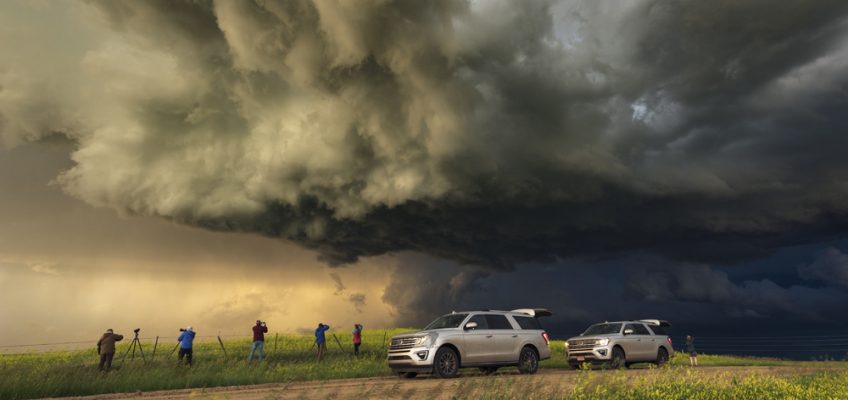Chasing the Weather by John Finney
Chasing the Weather by John Finney
I have been fascinated by the weather from an early age. The weather has had a big impact on my life as I have spent so much of my time outdoors cycling and walking in the mountains. When I first started doing landscape photography in 2007 I already knew the importance and influence of the weather and its effects on the atmosphere of the land.
I have seen many photographs of the big storms in America from photographers like Jim Reed. One of his photographs, in particular, caught my attention, ‘A Tornado, 500 Feet In Front of a Kansas State Trooper Patrol Car’, in such a way that I wanted to see a tornado for myself.
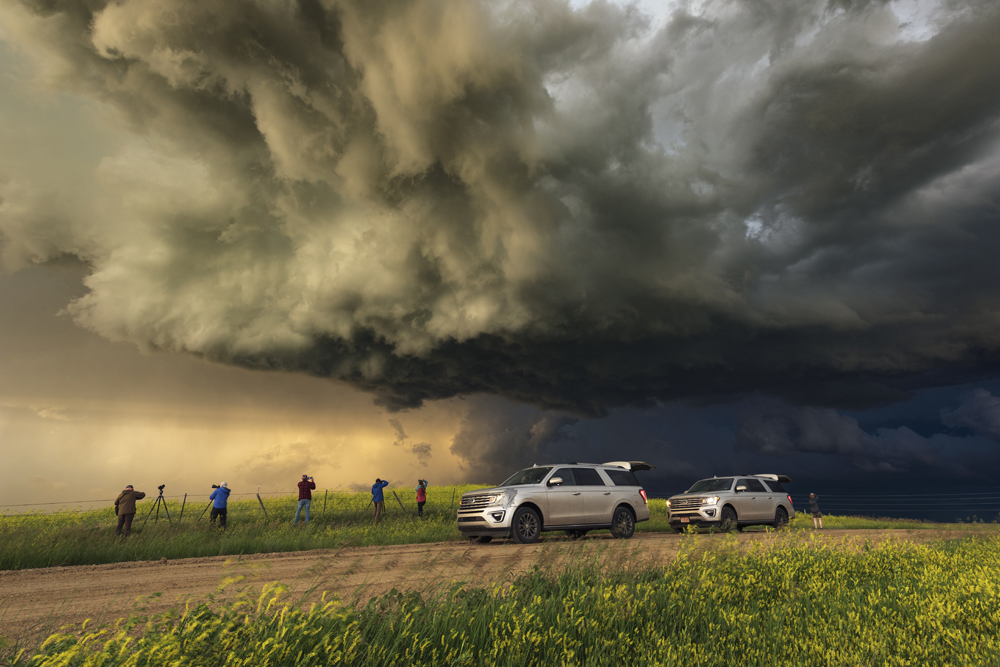
I finally got the chance to go storm chasing in Midwest America in 2013 with a good friend of mine who had been chasing the previous year with Weather Holidays. This was a real eye-opener because the 2013 storm season was very active. I was lucky enough to see my first tornado on my first day, in fact within a few hours of getting into a chase vehicle. Many people do not see a tornado the first time they go storm chasing, as they are actually quite rare, but they are obviously dangerous, as day two proved to be.
On day two, we were southwest of Moore in Oklahoma chasing a supercell storm. As the storm was heading into populated areas, our guide, Paul Botten, decided it was too dangerous to continue chasing as there were reports of a large tornado. Chasing storms in populated areas can be dangerous as it can be more difficult to have a safe escape route, and the local communities do not need the burden of storm chasers in the event of an emergency situation. Unfortunately, a tornado emergency was declared as this storm tore through the town of Moore killing 26 people and causing over $2 billion of damage. Our chase day was over; there was nothing anyone could have done apart from warning the authorities of the tornado, which is done by storm chasers and spotters.
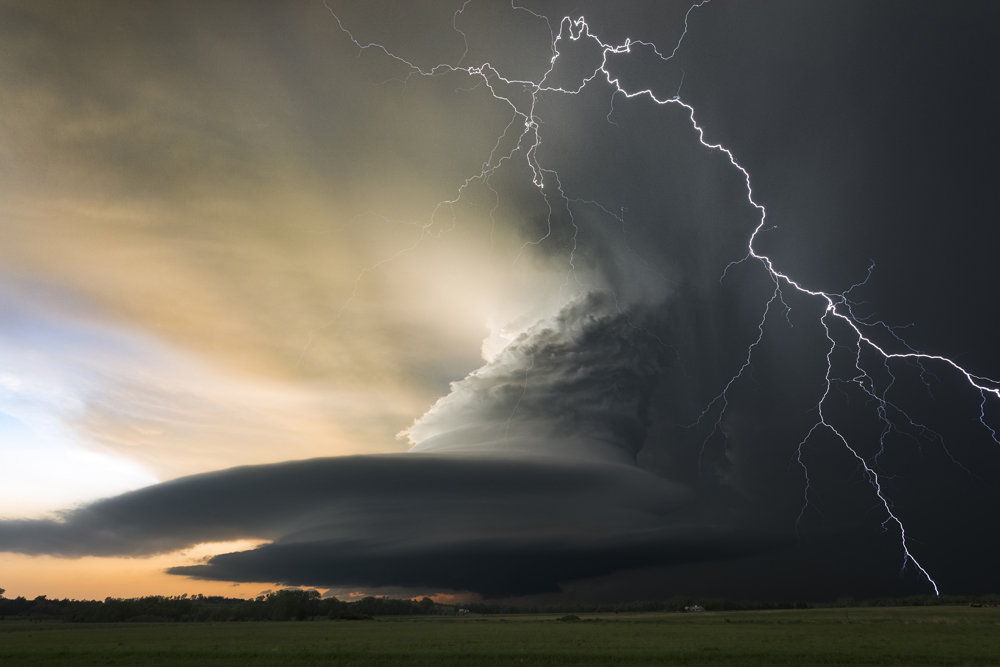
This type of storm photography can be quite difficult at times as it is more like photojournalism than normal landscape photography. There is not always time to set up a tripod – quite often I am leaning out of a car window travelling at speed while trying to capture a fast-developing supercell. You seem to be constantly on the move and when we do stop it isn’t always ideal for pictures, but this is what it can be like when the weather is active and you are chasing tornadic storms in peak tornado season.
However, it is not all frantic. There is another side to storm chasing; there are vast stunning vistas and astonishing photogenic storms. At times we are able to stop and watch these storms develop, and if lucky, witness a tornado or two off in the distance ripping up dust on the high plains away from the towns and doing no harm. Watching these storms explode upwards into the stratosphere with their powerful warm updrafts is quite something, they sometimes display mammatus clouds (under the anvil) and with the setting sun, they look otherworldly especially with lightning. Sometimes the lightning gets so fierce it is like strobe lighting. As the air cools after sunset they can really get active, constantly flashing and lighting up the night.
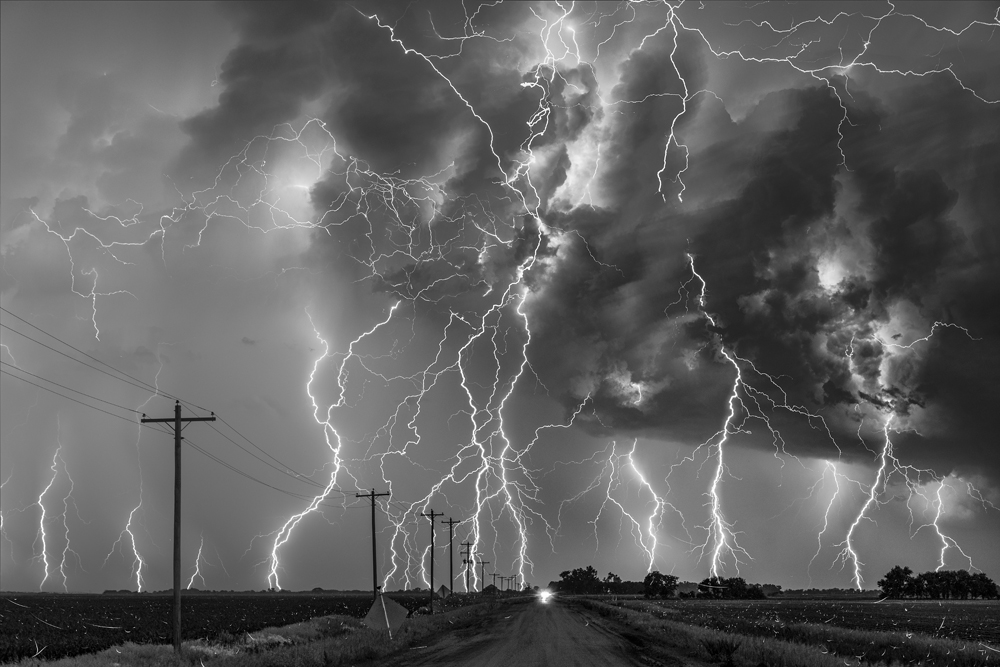
There are generally three types of supercells, the classic (normal precipitation), HP (high precipitation) and LP (low precipitation), and a storm can change from one to another quite quickly. The classic and especially the LP storms can produce some of the most photogenic skies and do tend to be slower moving than the HP storms, which can be more dangerous. At the extreme end of the scale you can have rain-wrapped tornadoes that are not visible; the HP storms can produce flash flooding and extremely poor visibility. These storms are generally not photogenic unless you are in the clear and out of the rain. All supercell storms can produce hail, from pea size up to a monstrous 4 inches in diameter, although as large as 8 inches has been recorded. It is not uncommon to see hail between 2 and 3 inches in diameter (baseball size).
Navigating these storms is done by our expert guide, Paul Botten. He has a wealth of experience chasing the big storms in Tornado Alley and has safely witnessed 225 tornadoes in the 17 years he has been chasing. He uses several different types of live weather radars with a fixed laptop in the lead chase car. These SUV cars are fitted out with all the necessary ariels, wiring and laptop holders at the start of the storm season. There are typically 2 to 3 cars for each tour. One tour lasts 10 days and we can cover 5000 miles during this time. Over the years we have chased in New Mexico, Texas, Oklahoma, Colorado, Kansas, Missouri, Wyoming, Nebraska, Iowa, Montana, South Dakota, North Dakota, Minnesota and even Alberta and Saskatchewan in Canada. Weather Holidays also chases the monsoon season in Arizona. Every chase day is different and every tour has different guests which make for a great way to see the real America and meet like-minded people. The Weather Holidays drivers are all experienced seasoned storm chasers with some being professional meteorologists.
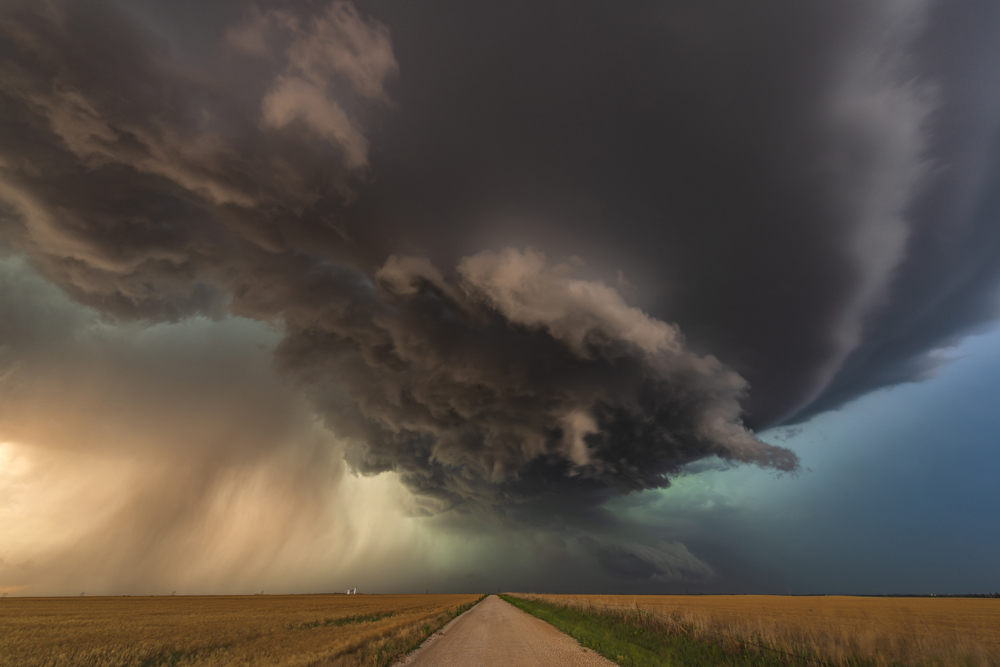
The photography equipment I use for storm chasing differs slightly from my UK landscape kitbag. I use at least two DSLR cameras, so I don’t have to change lenses. It is not practical to change lenses in a moving car, and there is usually dust or rain, or both. I use the Nikon D810s, one with a Nikon 14 24mm f2.8 lens and one with a Nikon 24 120mm f4 lens. Sometimes I use a Nikon D500 on a Nikon 70 200mm f2.8 lens. All lenses have lens hoods to try and keep water droplets off the front lens element. I carry at least 2 lens cloths because water on the front lens element can be a constant problem. This is why I don’t use filters when storm chasing. My main tripod is a Gitzo systematic with an Arcatech levelling base and an Arca Swiss Z1 ball head. I also use remote shutter releases and a light sensor for lightning to trigger the shutter. These are ok but don’t always work, especially in awkward light situations such as bright daylight or a low contrast sky, even the passing headlights of a car can set it off. They work best when the lightning is close enough to stand out against a dark sky. If I look back over my archives, nearly all of my best lightning shots are without using a light sensor, but I would still recommend a light sensor as you need every advantage to capture lightning.
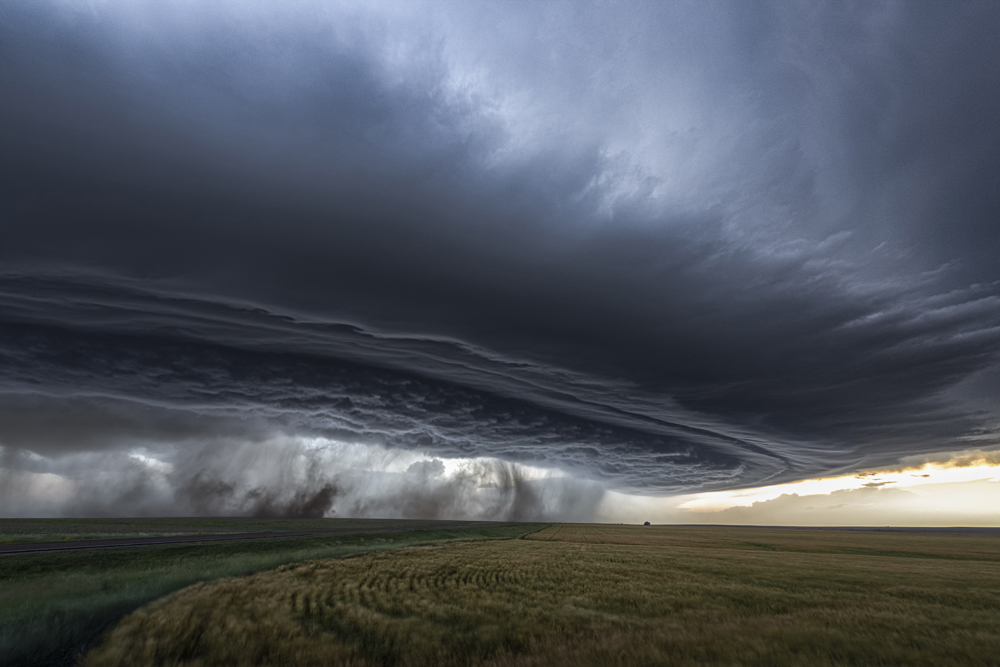
The kitbag I use for UK landscapes consists of a modified Osprey rucksack with a ventilated back, one Nikon D810, the lenses are all Nikon, 16 35mm, 24 120mm & 80 400mm. I also use a Wolverine 100mm Kase filter kit. As well as the same trusty tripod I take storm chasing and a remote shutter release.
I am a full-time multi-award-winning landscape and storm photographer based in the Derbyshire High Peak. I run my own one-on-one tailored landscape photography workshops in the Peak District and I am a storm chase photography tour guide for the British based company Weather Holidays.
www.instagram.com/john_finney_photography

